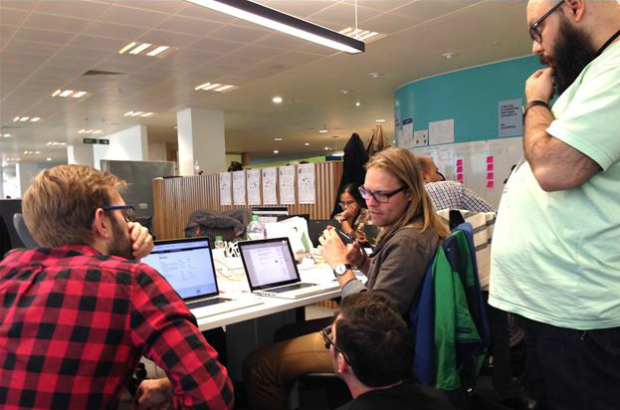Looking back at my first 4 months as a new designer for Home Office Digital, I can’t believe how much I have learned and how much I‘ve changed as a designer.
One of the big pushes for us at the Home Office is doing regular user research and designing services according to user needs. This is something I am fairly new to. Don’t get me wrong, I‘ve always done my best to meet the needs of users with my work, however feedback has generally come from colleagues, the wider organisation, and analytics. Actually watching users interact with my designs is a completely new and enlightening experience.
This is what I’ve learned…
Iterate fast
Because you receive user feedback so regularly, it’s important to have a quick turnaround of new designs to make the most of what you’ve learnt and so you can get new iterations in front of more users. Fresh ideas scribbled on post-it notes and given to your front-end developer are common, as are bare-bones HTML prototypes, printouts and lots and lots of sketches.
Mistakes are valuable
What user research gives you is quick and constant feedback on what isn't working in your product, and suggestions on how it can be improved. This approach makes you more comfortable with your designs failing. Being less attached to your designs leads to better collaboration with colleagues, and a quicker cycle of design, testing and iterating.
Make design about people
This one is easy, right? I mean obviously you're designing something that will be used by a person. Unfortunately the reality is that the user is too often overlooked, and the focus turns to pixels, padding and making something beautiful.
User experience is the responsibility of the whole team
One thing you learn when designing with user research is that findings lose their value unless they are shared with the entire team. It doesn’t matter what your position is within the team; developers, business analysts, and product owners all need to understand exactly what the users wants from the product. Sharing the insight ensures that the whole team understands and considers the users, which will result in the development of a product that better meets their needs.
This is one of the reasons why having a “UX role” within a team can be a curse as well as a blessing. It is often the case that the team may feel that by simply having a UX person in the team means the users’ needs are being considered. But it’s only when the entire team is aware of the insight that the research discovers, can the team truly begin to understand the user.
Working together…works
Sometimes designing can be a lonely job. The user research-led approach, however, drives the collaborative environment and brings everyone round to the same, user-focussed way of thinking. The goals of the team are very clearly defined and, as such, the team works together in a more focussed way.
Let’s share
Do you have a different approach or thoughts on what we’re doing? We’re open to further improvements in how we approach digital transformation and would love to get your thoughts, inputs and experience in the Comments section below or via twitter


Leave a comment